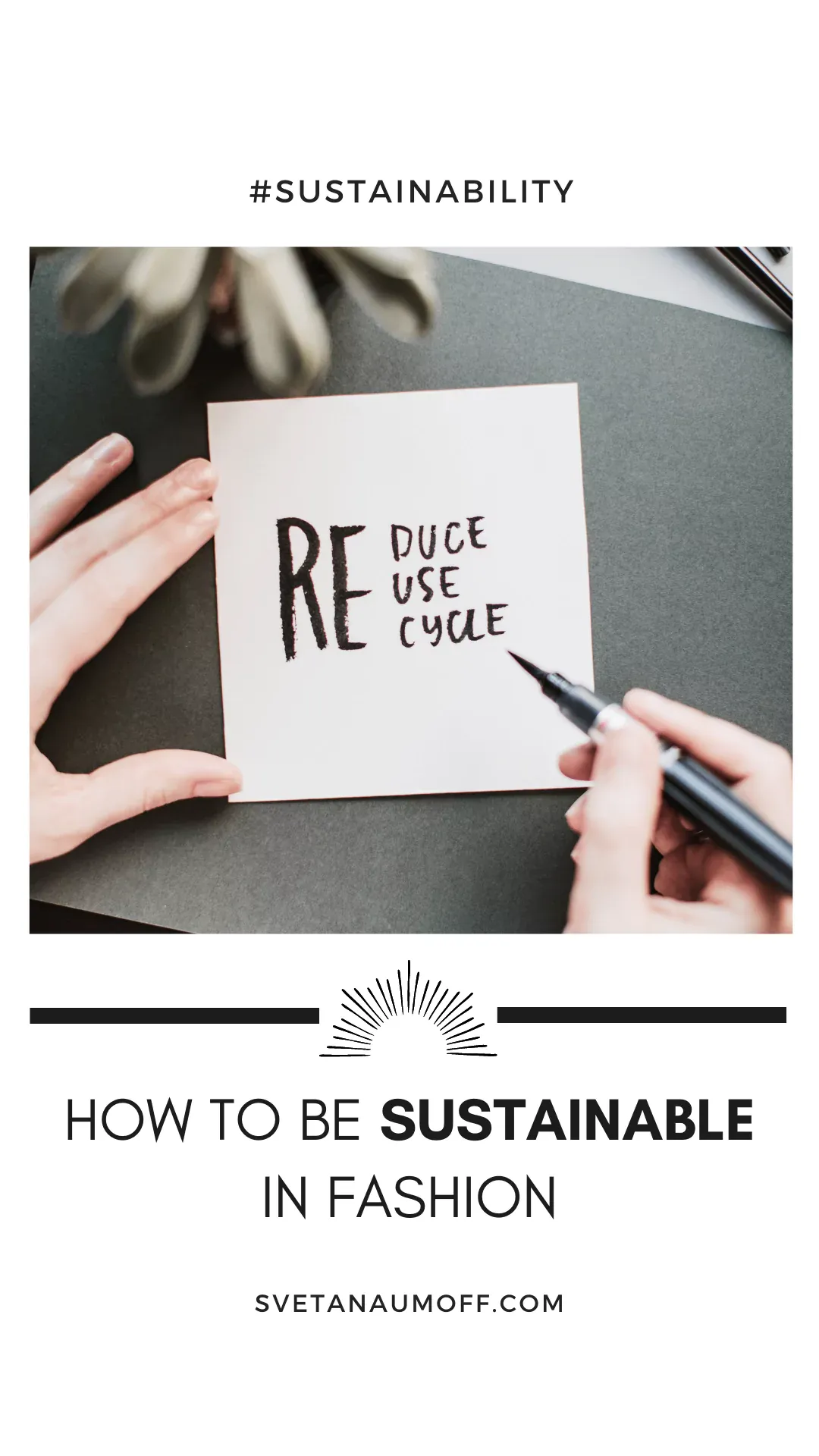
As I talk about aesthetics in this blog, it's evident that the topic of fashion & sustainability cannot be ignored. To me, everyday aesthetics is living my life so that my soul and my mind agree with each other. And I apply the same principle when buying clothes.
WAIT! If you’re more of a visual learner, check out my YouTube video where I detail everything in this post.
Pin for later:
A few words on everyday aesthetics and fashion
For me, the aesthetics of the wardrobe is achieved by a simple idea: everything in it is perfect (which means it is of high quality and is combined with other things in the closet) and brings me joy; it's aesthetically pleasing.
That's why, when it comes to fashion, I tend to be a bit skeptical. I feel like the concept of fashion lacks personality. But, no matter if we are following the latest trends or just upgrading our old wardrobe from time to time, we buy something.
And when it comes to quality, especially nowadays, the market is overcrowded on the one hand. On the other hand, as people around the world begin to think of their impact on the environment, the concept of sustainability instantly comes to mind.
Do aesthetics and sustainability go hand in hand?
In this post, I'll expand on the topic and share my thoughts and the latest studies.
The most common definition of sustainability comes from the 1987 Brundtland Commission report for the United Nations. It defines the concept as "meeting the needs of the present without compromising the ability of future generations to meet their own needs."
The 3 rules of sustainability are Reduce, Reuse and Recycle. At first sight, these principles look perfect. But I find them controversial when it comes to clothes.
And the only rule I 100% agree with is Reduce. It completely correlates with my everyday aesthetics principles. I feel like (and I think) that it's essential to reduce the number of clothes we buy. The high-quality pieces come in handy here. They last much longer thus we can buy less. And have less impact on the environment. I'd also like to mention that high-quality does not always mean expansive. I'll get back to it later in the video.
Now, let's talk about the other 2 rules of sustainability. Reusing and Recycling. Do they go hand in hand with aesthetics principles? Do they really help do less harm to the environment?
Have you ever paid any attention to what popular brands suggest we buy? The majority of these pieces contain polyester, nylon, or other similar fabrics. These fabrics are made from PLASTIC. Actually, about 60% of all garments manufactured worldwide contain polyester.
So, whenever you wash a garment at home, tiny microfibres are released into the water supply. More than 4500 fibers can be released per gram of clothing every time you wash. Synthetic microfibers are a type of microplastic pollution, ending up in our rivers, oceans, and food. These microfibres do not biodegrade for years.
Studies & Research:
It's official – microplastics have been found in our drinking water
UK Water Industry Research
Premature or precautionary? California is first to tackle microplastics in drinking water
Final thoughts on wardrobe sustainability
So doesn't clothes reusing and recycling look like a giant marketing campaign rather than a solution? Does reusing and recycling garments make sense? To me, it's not.
Of course, I do understand that it's almost impossible to live without using plastic nowadays. But what I feel is the right thing to do is reduce its usage as much as possible. And reducing the amount of low-quality garments made of plastic is an important step.
But how can we do it? In my next post, I show you the actual examples of how to choose high-quality garments that will last longer, will not contain plastic, and won't break the bank.





Post Comment
Post a Comment
Leave your comment here